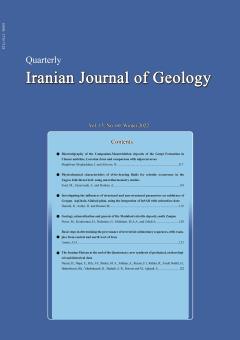-
-
List of Articles
-
Open Access Article
1 - Biostratigraphy of the Campanian-Maastrichtian deposits of the Gurpi Formation in Chenar anticline, Lorestan Zone and comparison with adjacent areas
Iraj Maghfori-Moghaddam ندا افروزه -
Open Access Article
2 - بررسی خصوصیات فیزیکی و شیمیایی سیال کانه¬دار در رخدادهای سلستیت کمربند چین خورده-تراستی زاگرس؛ با استفاده از مطالعات ریزدماسنجی
مدینه ساعد Alireza Zarasvandi اکبر حیدری -
Open Access Article
3 - Physiochemical characteristics of oOre-bearing fluids for celestite occurrence in the Zagros fold-thrust belt: using microthermometry studies
رضوانه حمیدی Hojjat Ollah Safari مهاسا روستایی -
Open Access Article
4 - Geology, mineralization and genesis of the Madabad celestite deposit, south Zanjan
مهسا نوری Hossein Kouhestani قاسم نباتیان میرعلی اصغر مختاری افشین زهدی -
Open Access Article
5 - Basic steps in determining the provenance of terrestrial sedimentary sequences, with examples from central and north west of Iran
عبدالحسین امینی -
Open Access Article
6 - The Iranian Plateau at the end of the Quaternary: new synthesis of geological, archaeological and historical data
Hamid Nazari Elahe Najar Jean franscois Ritz Mohammad Ali Shokri aram fathian fereidon Rezaei Alireza Rahim Hasan Fazali nashli Khalil Baharfirouzi hamed vahdatinasab alireza shahidi mahdi borzooii Elnaz Aghaali
-
The rights to this website are owned by the Raimag Press Management System.
Copyright © 2017-2025







